Everything you need to know about draping fabric
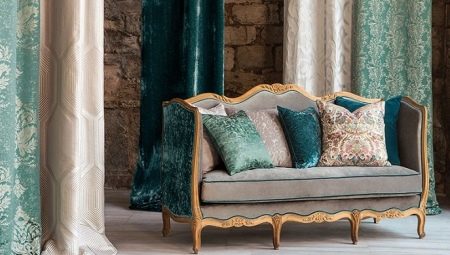
Textiles have been used in interiors for centuries, and today designers use them to create a special atmosphere in homes, restaurants, and concert halls. The material can be used to decorate any surface in the room, the main thing is to choose the right type of fabric.
For this, a technique such as drapery is used, which has several advantages. Your attention is offered more detailed information on how to make a drapery with your own hands, what fabric to choose for this, and what can be done in the interior.


What it is?
The essence of fabric drapery is in giving the material volume by pulling it into folds... This design can be very different: for example, beginners can use a simple assembly on tapes or cords, for this you can use a fastener, make a pick-up at different points. It is very interesting to create even folds, which can be multi-sided or bowed, in a horizontal position. It looks aesthetically pleasing and elegant. Experts do this using a pattern, in this way you can make beautiful drapery patterns. To do this, you need to calculate the value, determine the places of the undercuts, prepare the appropriate tools and parts.
Not all types of fabric are suitable for spectacular drapery, some of them stretch strongly, so it will not work to create the desired shape. This means that before work, it is necessary to prepare the appropriate material from which the conceived drapery will turn out. The first step is to decide what exactly the decor is being created for, since it is better to choose an airy and light one for curtains, and a heavy type of textile for curtains.

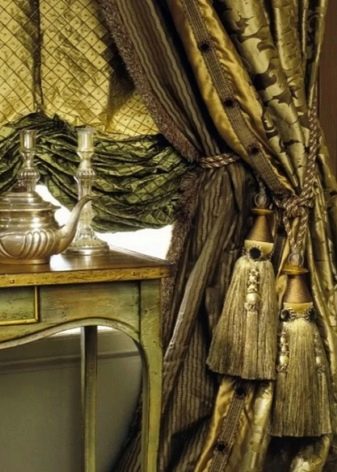
The main advantages of drapery include the following. No finishing materials for walls and ceilings are able to create the same coziness as fabric does. In addition, the material is able to soften bright lighting, make changes in texture. It is worth noting that the drapery is suitable for any style, the main thing is to choose the right fabric that will practically hide any unevenness in the surface of the ceiling or walls, which is a big plus. Compared to wallpaper, the material has a higher sound absorption rate.
In this case, it is not necessary to spend time and money preparing the walls. A layer of foam rubber is often placed between the fabric and the surface to improve thermal insulation. Shrinkage of the building or various damage will not affect the textile finish in any way. The procedure is simple, everything can be done independently, without rich experience, you just need to study the instructions.
Another advantage of drapery is the safety and environmental friendliness of the material.
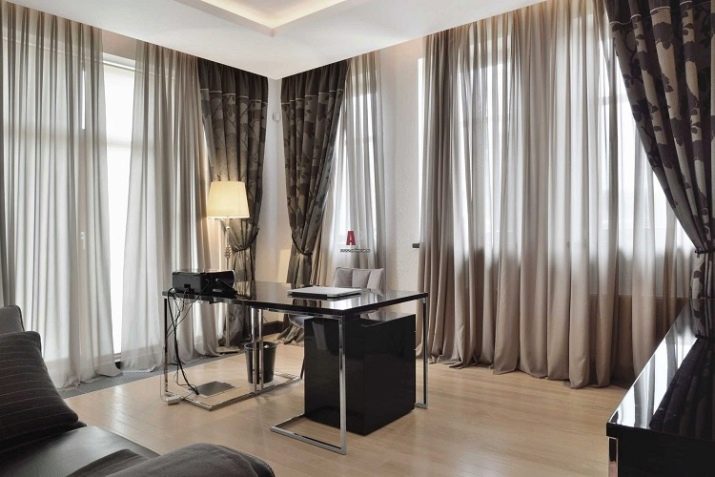
What materials are used?
Good drape is not observed in all types of fabrics, so this issue needs to be studied in detail. It is worth noting that both synthetic and natural materials are suitable for the procedure, however, the former are considered more practical, moreover, they are easier to care for, and they do not create problems during gluing. For drapery, you can choose a dense fabric, then the result will be of high quality.
Experts recommend paying attention to upholstery designed for furniture: it is durable, affordable, and easy to clean. Among natural ones, it is preferable to choose jute, sisal or jacquard, while synthetic ones include polyester, polyamide and viscose. The latter options are resistant to moisture, they will not lose their shape, will not sag or accumulate moisture, but it all depends on the place where the draped fabric will be installed.
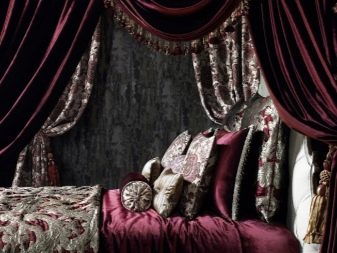
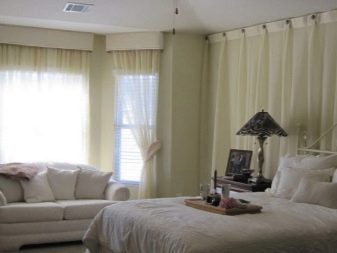
Application
As mentioned above, The fabric draping technique is used in various aspects of the interior, which can be found below. This is a real decoration for cornices, tables, windows, besides, textiles can be used for weddings as a background and in other situations.

In clothes
Drapery in clothing design is used as an element of modeling, with which you can emphasize all the advantages of a figure or hide flaws. Many professionals are leaning towards this technique, so it can be seen in a wide variety of collections.
In this case, professionals use light and thin materials, for example, muslin, chiffon or cambric, but you can find folds in clothes made of silk, knitwear or textured fabrics, which looks impressive.


Walls
Such a finish is in great demand, and besides, it is the best solution to hide all the disadvantages of an uneven coating. This option is suitable for those who want to renovate the interior, but have no construction experience. In addition, the fabric creates a layer of sound insulation; during installation, you will not need to spoil the walls. But here it is important to remember such a drawback as the accumulation of dust on pile fabrics, moreover, this finishing option is not suitable for rooms with high humidity.
This decor is best used in living rooms and bedrooms; it can also often be found in concert halls and restaurants. The fabric attaches to a wood or metal base, making it easier to remove and clean.
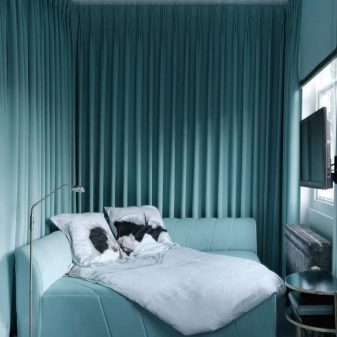
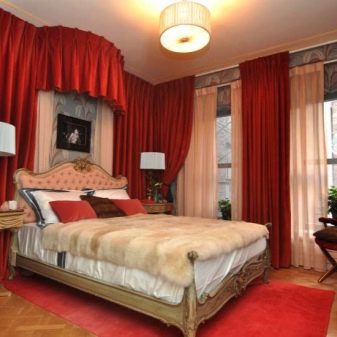
Curtains
For an interesting window design, you can safely choose a fabric drape, because it is difficult to imagine a living space without curtains. It will be the perfect design element that will look good and create a cozy atmosphere. Draped curtains are suitable for styles such as baroque, classic and neoclassical, they are luxurious and look expensive. For this, silk, velvet and moire are used, which can be additionally decorated with cords and lace.
For modern, drapery on light-colored fabric is also suitable.The American and French styles, which use curtains with small folds, have the maximum simplicity and practicality. Cotton, silk and linen are ideal here.
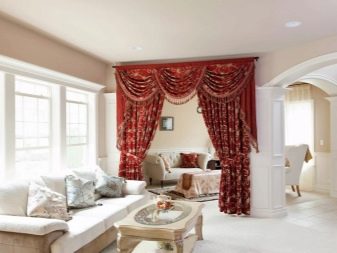
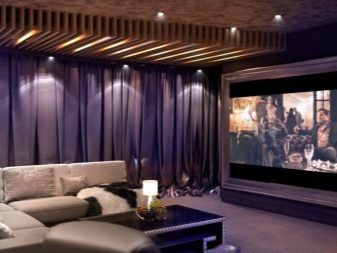
Ceilings
This type of decoration is considered one of the most ancient, it is still used today and looks like a real work of art. The fabric can be arranged in straight lines, or made of rectangles cones, covering all or only some areas of the surface. The main advantages of draping fabric for the ceiling include hiding defects and the effect of luxury. However, this option is only suitable for rooms with high ceilings, since the room will visually become much lower. Editing will take longer than usual, but the result will be worth it.

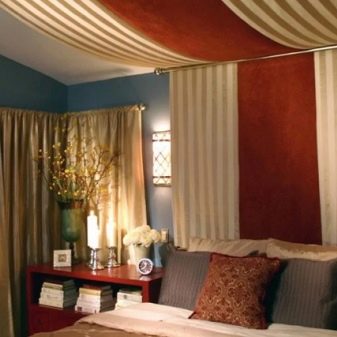
Doors
Textiles for decorating doorways began to be used in the past centuries, but even today it is relevant in interiors with a certain style. It is important to note that the shape, color and type of fabric must match the curtains perfectly. Elements made of the material are suitable for cabinet doors and interior doors.
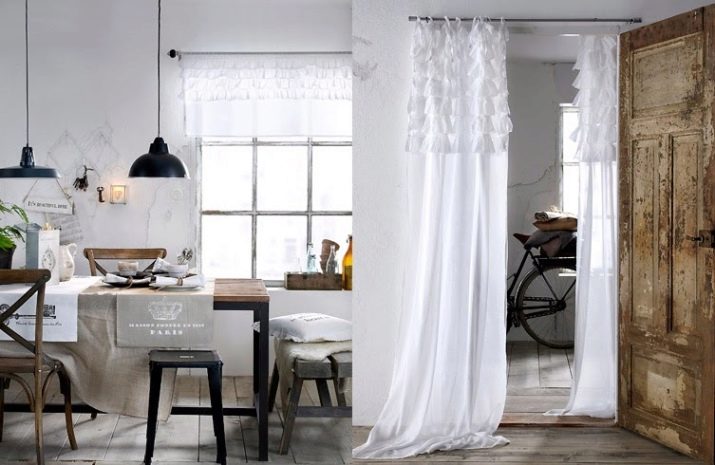
Arches
Most often, there are no doors in such openings, but to divide the space, you can use textiles, after draping it. You can make the cape on the cornice or, on the contrary, fix it under the bend to emphasize the shape of the arch. The style should be the same as on the doorway.
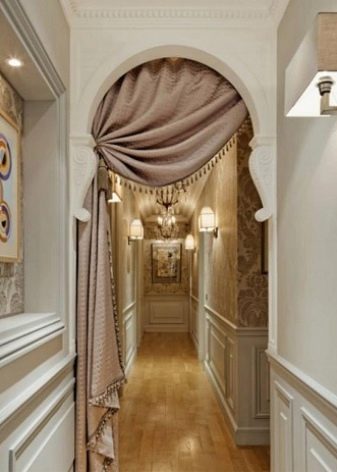
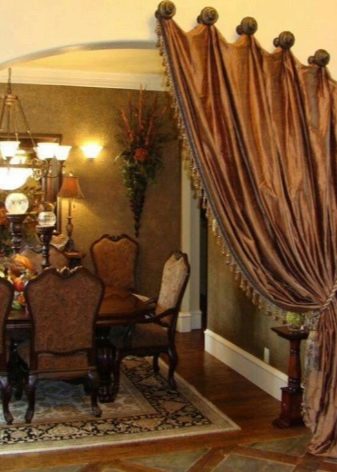
Tents
The wedding ceremony requires special decoration. If the room is large, with high ceilings, the fabric can be draped to create a tent-like shape where sagging stripes extend from the center to all edges. The same technique can be used to equip a canopy above the bed, while it is important to consider the height of the ceiling and select a fabric that will match the rest of the textiles in the room. In any case, the tent creates a romantic atmosphere and festive mood. At festive events in recent years, the arrangement of sites with this method is in great demand. Although it is not cheap, as it requires a lot of fabric to drape, the result is stunning.
But even at home you can make such beauty if you follow simple tips. For example, to decorate a wall, it is enough to fill a rail around the perimeter, to which the fabric will be attached. In the course of work, you will need nails with decorative hats, they can be replaced with furniture staples. It is necessary to fasten the draped material from the upper corner, observing the tension of the canvas. Gluing can also work, requiring furniture glue and an iron. The work must start from the top: smear the surface, then fix the corner of the canvas and smooth it with an iron so that the glue is absorbed into the wrong side.
The width of the folds can be chosen at will, the main thing is that they fit into the interior.
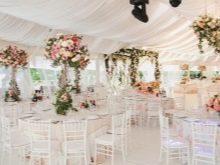


Beautiful examples
Drape fabric can become one of the important elements in interior design, with the help of which the individual style of the owners is emphasized. If you choose the right type of material and make neat folds, the result will be appropriate. Here are some examples of how you can use drapery in different ways.
- This is what the wall hangings in the bedroom look like.
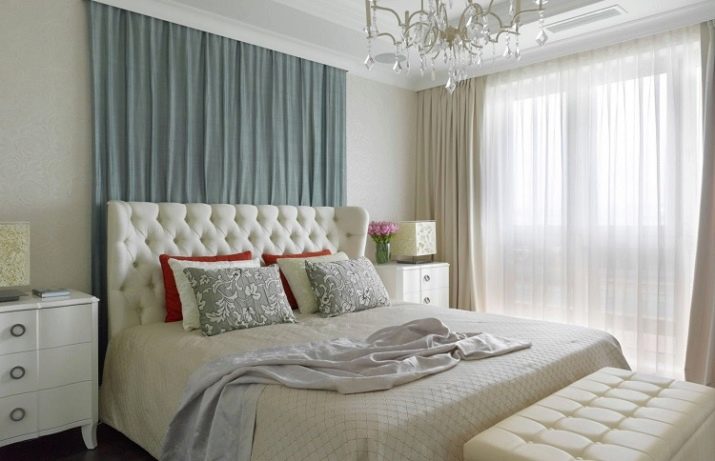
- The living room will look elegant with wall hangings in lightweight chiffon fabric.
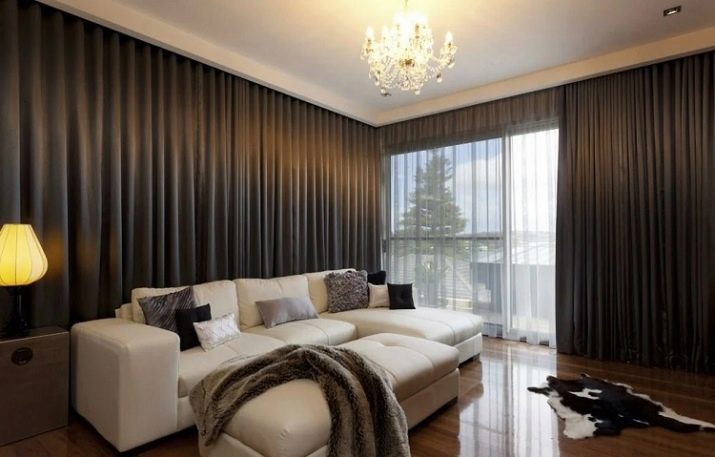
- This bedroom looks like a king.

- This design option is suitable for the interior of restaurants.
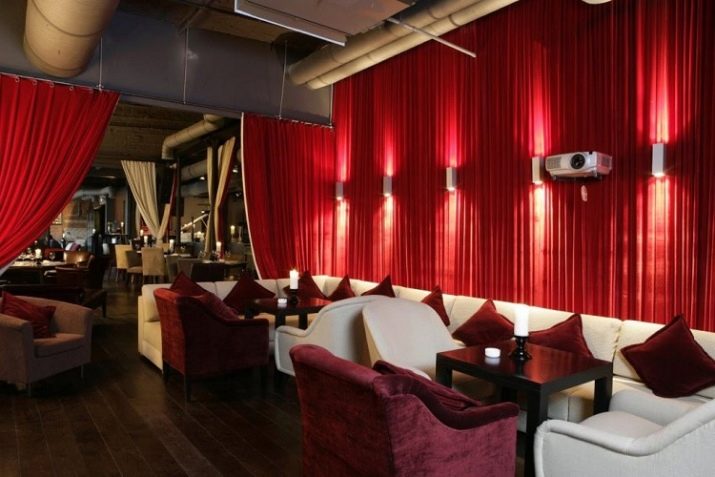
- The wedding ceremony under such a tent will be remembered by everyone.

- The combination of a luxurious chandelier with fabric-draped walls looks elegant.
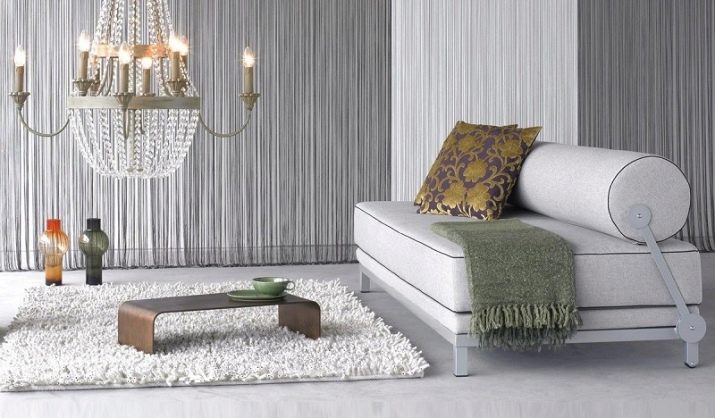
- This is what an arch might look like.

- An ordinary window will turn into a work of art.









